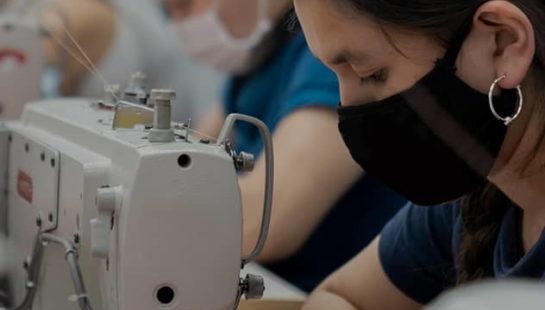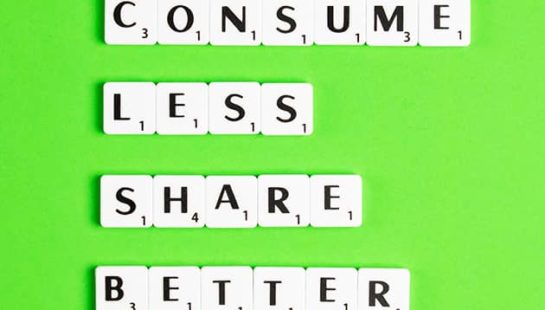The fashion industry is running at a record high level of production and consumption. As we produce and buy clothes faster, the lifespan of our clothes is shortening. The average consumer buys 60 per cent more clothing than we did 15 years ago but we keep them for half as long. This creates a huge textile waste problem. On average, each Australian disposes of 93 per cent of the textiles they buy with only 7 per cent of this waste recycled. This equates to 600kg of Australian clothing and textiles being dumped in landfill every 10 minutes!
No one wants to see their clothes in already overflowing landfills. We all need to be mindful of how we approach the end-of-life stage of our clothes. Here are some tips!
First thing to do is some sorting. Sort your unwanted clothes into three categories:
1. Old Favourites
This is the pile of old favourite clothes you’ve been holding onto but don’t get much wear out of anymore. By doubling the useful life of these clothes from one to two years we can reduce emissions by around 24 per cent. Disposing of clothes indirectly creates more emissions, because as we discard clothes, we prompt the production of more. Some extra love for these old favourites could keep them in your wardrobe longer, reducing their environmental impact.
TIPS FOR RE-USING OLD CLOTHES
A few tweaks can make them feel brand new again. Can they be altered? Would you wear it more if it had shorter sleeves? Could the jeans be turned into shorts? There are many alteration services to help you with repairs and the internet is brimming with useful at-home hacks.
Here are a few ways you could give new life to old favourites:
- Re-dye or tie dye old clothes
- Make something new from something old—turn jeans into shorts, or a dress into a top and skirt!
- Embroider over holes to fix them
- Alter ill-fitting clothes
2. Clothes For Others
Clothes Swaps, Reselling And Donating
These are the clothes that don’t have a place in your personal wardrobe anymore. Passing clothes onto others is a great way to extend their life. Do you know someone that might enjoy this garment? You could even host a clothing swap to bring your friends together to share clothes! In fact, swapping just a single suitcase worth of clothes (20kg) saves enough energy to run a television non-stop for 1.7 years.
There are also platforms that are dedicated to the resale of second-hand clothes. Depop and Facebook marketplace are great ways to engage in sustainable fashion practices and get a little extra cash. This is a great step in the right direction towards a circular economy.
Most people’s go-to option is taking clothes to the op shop. This is super easy but donating must be done responsibly! You shouldn’t donate clothing that you wouldn’t consider giving to a friend.
Check List Before Dropping Off Clothes At The Op Shop:
Here are a few things to check off before you drop to your local op shop:
- Are all buttons and closures functioning?
- Are all the seams intact?
- Are there no stains?
- Are there no rips or holes?
- Is it washed?
What Happens When Your Clothes Get Donated?
More sorting! The volunteers will decide if the clothes are of high enough quality to sell in op shops locally. Other clothes will be sent offshore, some are sent to other recycling schemes or to landfill. That’s right—donating doesn’t always mean it won’t end up in the bin, especially if you haven’t checked your garment before dropping off! Op shops spend an estimated $13 million a year to send unusable donations to landfill which represents 60,000 tonnes of waste.
3. Unwearable Clothes
For the clothes in this pile, take a minute to understand why you consider them unwearable? Sometimes the smallest defects deem our clothes unwearable, but this shouldn’t be the way—buttons can be replaced; holes can be repaired, and stains can be covered with dye or patches. These could be moved into ‘Old Favourites’ and be given new life with simple repairs. We’ve been privileged to wear and love these clothes so if we can fix them, we should!
Clothes Recycling Services
So, with the remaining clothes, what’s next? Textile recycling is new and complicated. There is no system for recycling clothes that is as effective and well developed as recycling glass or cardboard. Think of all the different components in the clothes you are wearing now; zips, buttons and the mix of fibres too. Sorting and disassembling clothes is difficult! There are some cool movers and shakers starting to work in this space on a commercial level like Upparel, After and Recycle Smart. These companies work to collect and recycle/downcycle your clothes. Downcycling is turning your textile waste into something of lower value such as stuffing for car seats or insulation.
ideas for Downcycling or recycling clothes:
Downcycling and recycling can be done at home too! Think of your garments as useful textiles—here are a few ideas to get you started:
- Make a patchwork tote from two different old garments
- Cut up fabric into strips to make plant ties
- Cut out some old garments to make cleaning cloths or a cloth mask
- Knot and braid durable denim to make a dog toy
We spend a lot of our time in our clothes, so we should take time with them at the end of their life too. We’re all responsible for what we do with our clothes at this stage. Whether we give them new life in our wardrobe, in the wardrobe of a friend or they become something else, our unwanted clothes can live on.



 Baptist World Aid
Baptist World Aid

 Bonnie Graham,
Bonnie Graham,